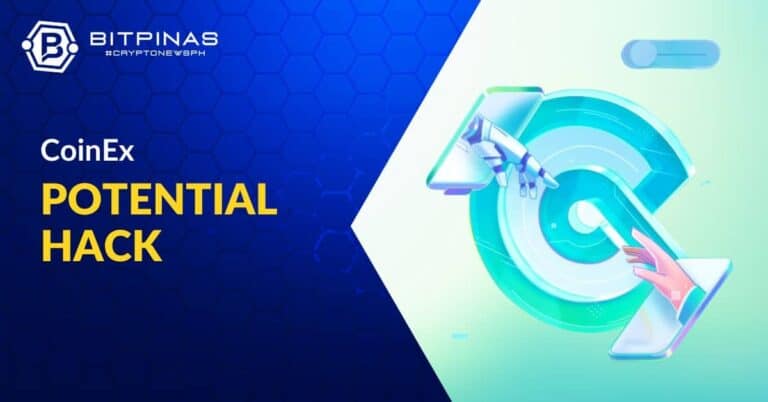Navigating PoW Coin Halvings: Impact on Miners, Markets, and Blockchain — Coinex Institution
Halving is a key mechanism in PoW systems that not only affects scarcity and value but also encourages decentralization.

- The article by Coinex Institution delves into the economic impacts of halvings in Proof of Work (PoW) cryptocurrencies, affecting miner income, market prices, and network hashrate.
- It highlights that while halving events reduce miners’ rewards and can lead to a concentration of mining power, they also have the potential to drive up cryptocurrency prices in both the short and long term.
- The article argues that halving is a key mechanism in PoW systems that not only affects scarcity and value but also encourages decentralization and technological innovation within blockchain ecosystems.
Cryptocurrencies that adopt the Proof of Work (PoW) mechanism, such as Bitcoin, come with an important economic attribute called halving. This mechanism automatically adjusts the output of tokens at regular intervals. Halving has an impact on the price of crypto assets, miner income, network hashrate, and more. Since the launch of Bitcoin, it has already undergone three halvings, and the fourth halving is expected to occur in May 2024. Other PoW cryptocurrencies also have similar mechanisms. As a major characteristic of cryptocurrencies, the halving mechanism deserves close attention from investors, miners, and others in the blockchain community.
This article is contributed by Coinex Institution.
This article aims to provide a systematic analysis of halving from the perspectives of its definition, halving schedule of major PoW coins, its impact on miner income and network hashrate, as well as short-term and long-term effects on market prices. It aims to help readers gain a broader picture of halving and its economic significance, evaluate the potential impact of halving on different coins in the market, and provide references for cryptocurrency investment decisions.

What is the halving mechanism of PoW coins?
Definition and Background
Proof-of-Work (PoW) is the blockchain consensus mechanism first proposed by Bitcoin. Under the PoW mechanism, miners maintain the security of the blockchain network by solving mathematical puzzles and receive system-issued tokens as rewards. Many mainstream public chains, such as Bitcoin and Ethereum in the early days, have adopted this mechanism which adjusts block rewards regularly. When the number of mined blocks reaches a predetermined value, the rewards automatically “halve”, meaning miners receive half of the block rewards. Halving makes the coins scarcer, and thus affects coin prices.
Importance of halving in PoW coins
Bitcoin has undergone three halvings since its inception, and the fourth halving is expected to occur in 2024. The block reward will decrease from 6.25 BTC at the current level to 3.125 BTC. This also means that the future total supply of Bitcoin will approach the upper limit of 21 million coins. The halving mechanism does not apply to Ethereum since it has completed the transition from PoW to PoS validation through the “Merge”. However, Litecoin, another PoW coin, just had its halvings in August 2023. Anonymous coins such as Monero and Zcash also have similar mechanisms. The timing of halvings varies, so it is necessary to pay attention to the roadmap of different PoW coins.
Economic impacts of halving
Impact on miners
Imagine miners mining for gold. Their efforts are rewarded, but as gold becomes scarcer, these rewards are on the decline. That bears some resemblance to the halving of PoW coins. Whenever the network generates a certain number of new blocks, mining rewards are reduced by half. This process also simulates the scarcity of real-world resources.
So, what does halving mean for miners? Firstly, small-scale miners with low hashrates will face double pressures. On one hand, as mining competition intensifies, the cost of participating in mining increases. On the other hand, halving directly reduces miners’ rewards by half. This forces some small miners to exit as profit margins shrink, and this part of hashrates will go to large mining pools, which further concentrates hashrates and may affect network decentralization and security.
Miners who choose to stay also need to, once again, evaluate the costs and benefits of their operations. Rising coin prices may serve as a cushion against significant disruptions to their mining income. For example, if the Bitcoin price doubles after halving, the impact of income decline will be offset. However, if the price rises just a bit, miners would suffer a heavy blow. When it comes to coins with high computational requirements and difficulty, in particular, the challenges confronting miners become even more daunting. In such cases, small miners may be compelled to exit the market, leaving only large professional mining farms capable of sustaining their operations. This trend will further drive the mining industry towards specialization and enhance overall business efficiency.
In summary, halving intensifies competition among miners, with a greater impact on small miners. Many small miners may exit, leading to increased concentration of hashrates and compromised decentralization. However, if the price soars, large miners’ income may stay unaffected. Therefore, whether halving can boost prices makes much difference to miners’ income. Moreover, the concentration of hashrates can also compromise the security of the Bitcoin network, a challenge facing all community members including miners.
Impact on the market
In theory, halving restricts the increase in token circulation, and the price is to some extent determined by supply and demand. Before the halving, there may be market expectations of price increases, prompting players to hoard coins to be mined in the future. However, by the time of halving, most of these expectations have already materialized. Historically, Bitcoin’s post-halving performance has varied. The BTC price surged following the first halving in 2012, while the second halving in 2016 failed to match the previous insane growth. That said, price movements are also influenced by many other factors, including market sentiment and macroeconomic policies. Overall, in today’s crypto space, although the impact of halving events on blue-chip PoW coins might be limited, for coins with a smaller market cap, the market expectation for halving could still drive up prices.
Halving events influence price movements both in the short term and long term. In the short term, prior to a halving, miners and speculators may snap up more coins to prepare for a reduced supply, which will boost the price. When the halving arrives, however, a certain degree of pullback is likely because the expectations often already materialized. Before the first halving in 2012, for instance, the BTC price surged to $11. Yet, the figure plummeted to $2 in a bearish trend that followed shortly after. It is therefore clear that while the pre-halving hikes are often the case, there’s also the risk of a post-halving decline.
However, in the long term, halving means a reduction in the supply of newly mined Bitcoin, making this store of value even scarcer. As its circulating supply diminishes, Bitcoin will become more reliable as a store of value, enabling upward price trends.
Benefits of halving for the PoW ecosystem
Blockchain is a decentralized network built on community participation. Halving helps PoW networks transform their economic models, reduce dependence on mining, and promote decentralization.
Role in the broader PoW ecosystem
To begin with, after halving, the reduced increment of tokens in PoW public chain ecosystems can make the tokens scarcer and more collectible. This encourages more users to hold the tokens for trading, thereby enhancing transaction activity on the public chain and facilitating the token economy.
Secondly, as mining income decreases for miners on public chains like Bitcoin, these PoW networks tend to circulate value through transaction fees, gas fees, etc., to maintain the motivation within the mining community. This will drive the materialization of more blockchain applications based on these public chains, especially in the areas of financial services, entertainment gaming, digital assets, etc., which, in turn, generates more transaction fees.
Last but not least, with the decrease in newly minted coins on Proof-of-Work (PoW) public chains such as Bitcoin following the halving event, holders are inclined to hold their assets for the long term rather than engaging in frequent trading. This not only contributes to the decentralization of token control but also mitigates the risks associated with centralization. The halving mechanism acts as a catalyst for technological innovation and business transformation within PoW blockchains like Bitcoin, propelling them towards maturity. Such an inherent mechanism also drives PoW public chains to optimize and upgrade themselves. The pressure imposed by halving will compel these blockchain networks to push the boundaries of applications and provide fresh impetus for ecosystem development.
In conclusion, halving is a prominent feature of Proof-of-Work (PoW) coins like Bitcoin, and it has diverse and intricate impacts. While it can partially limit coin issuance, its actual influence on prices relies on market sentiment. Furthermore, halving can facilitate the decentralization of public chains, provided that the coin is backed by technological advancements and tangible applications. However, PoW models should address their inherent challenges. Firstly, efforts should be made to reduce their environmental footprint by sustainable means such as the use of clean energy sources. Secondly, PoW projects need to actively expand their practical use cases. Lastly, PoW networks can explore synergistic integration with other consensus mechanisms. As blockchain technology rapidly evolves, PoW has emerged as a major consensus mechanism. We firmly believe that, through collective efforts from the community, PoW will continue to advance itself, further propelling the growth of blockchain technology and generating additional value in various applications. The halving mechanism will also play a significant role in this evolutionary process.
About CoinEx
Established in 2017, CoinEx is a global cryptocurrency exchange committed to making crypto trading easier. The platform provides a range of services, including spot and margin trading, futures, swaps, automated market maker (AMM), and financial management services for over 5 million users across 200+ countries and regions. Founded with the initial intention of creating an equal and respectful cryptocurrency environment, CoinEx is dedicated to dismantling traditional finance barriers by offering easy-to-use products and services to make crypto trading accessible for everyone.
This is a press release is sponsored and submitted to BitPinas by Coinex. BitPinas modified the title and some of the subheadings: Navigating PoW Coin Halvings: Impact on Miners, Markets, and Blockchain
Disclaimer: BitPinas articles and its external content are not financial advice. The team serves to deliver independent, unbiased news to provide information for Philippine-crypto and beyond.





